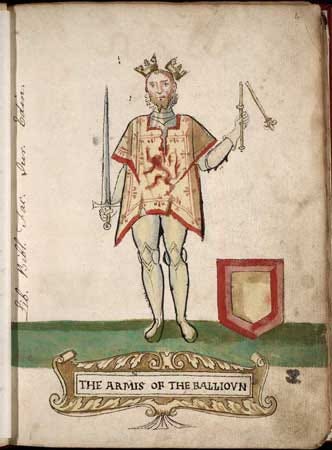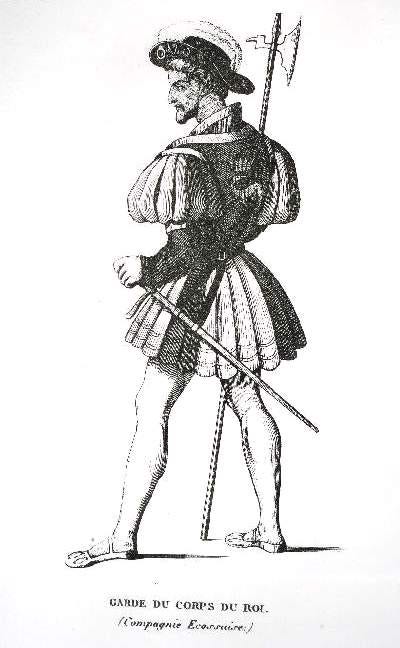The Longest Alliance in the World, and its Cocktail
The Auld Alliance and its culinary counterparts
The Auld Alliance, an alliance between the kingdoms of Scotland and France that started on October 23rd 1295 which is technically still in effect today, which makes it the worlds longest alliance. The Scots are so cool they persist on writing auld because they are old-school, or Auld-school and I respect that.
Anyways, the Auld Alliance was formed to defend against England. The alliance was never really revoked, formally speaking, but some might debate it ended under the signing of the Treaty of Edinburgh in 1560. I say neigh! If that was true, there wouldn’t be a cocktail named after the alliance.
The alliance held strong throughout centuries and was renewed by all the French and Scottish kings except for Louis XI (1423-1483) “The Prudent” a.k.a “The Universal Spider”, or “The Cunning”. He held an open rebellion against his father Charles VII. His father later forgave but banished Louis from court.
Louis married his second wife Charlotte of Savoy and led his own political establishment against the will of his father who sent a small army to urge his son to his will. Louis fled and stayed with his fathers arch nemesis Philip The Good, Duke of Burgundy.
Before marrying Charlotte of Savoy he was married to Margaret of Scotland who died early and the age of 20 who was the daughter of King James I of Scotland which Charles VII chose for diplomatic purposes. With speculations that both Louis, 13 years old at the time and Margaret 11 years old, didn’t like each other, and historians state he had a predetermined outlook to hate his wife.
Due to the so called impoverished state of the French court at the time, they cajoled the Scottish guests out of the wedding reception since the French couldn’t afford extra extravagance or host guests longer than possible. The Scots obviously took this as a slight, with all this to say this is a good reason that the probability that Louis XI had a predisposition to not favour the Scots too much since he might have been somewhat traumatised by this whole diplomatic charade.
Aside from Louis XI, by the late 14th century the renewal of the Auld Alliance happened regardless whether either kingdom was at war with England or not.
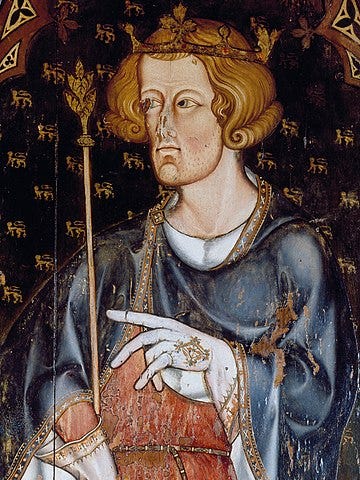

Back up to the passing of Scotland’s seven-year-old queen in 1290, Margaret, but this time another Margaret, the Maid of Norway. Edward I of England saw quite an asshole-ish opportunity to jab at Scotland and assert his dominion over the Scots.
In response to king Edward I actions, several Scottish nobles put forward their claim to the crown. John Balliol known as Toom Tabard (‘empty coat’) was chosen as the new King of Scotland by a group of nobles that were influenced by King Edward I of England, so in short a puppet king.
Edward had his puppet king in place and used his influence to transform Scotland as a vassal of England. Edward’s influence polluted and spoiled Balliol’s reign to the point Scottish nobility overthrew him and appointed the Council of Twelve to replace him.
The Council of Twelve then signed a treaty with France known as the Auld Alliance. The first treaty signed between Phillipe Le Bel, king of France and John Balliol, king of Scotland on October 23rd 1295. On February 23rd 1296 it was ratified by the Scottish Parliament, and it was mentioned that if one of the two countries should be attacked by England, the other would invade England.
This formidable alliance held strong many times.
Especially with Henry II (1519-1559), he was so enamoured with the Auld Alliance he gave privileges and naturalized the Scottish Guard in 1548 and to all Scots in 1558. The Scottish government responded in kind with mutual naturalization or joint nationality. As well with Louis XII (1462-1515) who granted naturalization to the all of Scotland in 1513. So the Scots were naturalized twice within 45 years.
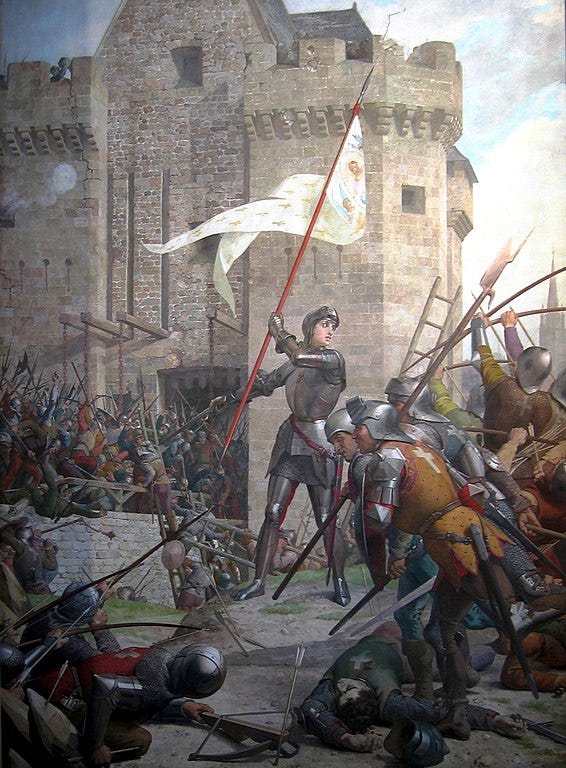
Plenty of military feats from the Scots are etched in history such as in 1429 when the Scots helped Joan of Arc lift the siege of Orléans. Or in 1336 at the start of the Hundred Year War, the French king Philippe de Valois gave David II, king of Scotland military aid. Ten years later, in 1346, Scotland invaded England to defend French interests. The Scots were defeated and David II was taken prisoner during the battle of Neville’s Cross. Just to name a few.
The French kings had their own Scottish Guards, which began in 882 which consisted of Scottish nobles that was formed to guard king Charles III but was not formally created until Charles VII. Again with countless historic tales of their bravery, skill and achievements are renowned. Even with a stellar history of protecting kings and being fearless warriors they were disbanded in 1830 under Charles X.
The French court were open to having Scottish nobles and lords living in France and with strong alliance this is one that leaves the imagination of everything going smoothly, especially with trade. In 1467, a Parliament act designed La Rochelle and Bordeaux as specific places for the Scottish trade. Funnily enough, these are great strategic trade routes for alcohol. Shortly after, another act mentions regulatory prices only for wines from Bordeaux or La Rochelle.
An important taste was considerably favoured by the Scots for Claret wine. A red wine from Bordeaux that became the favourite for Scots with an import of half a million gallons a year up to 1600! Bordeaux was the most common port used by Scottish traders but the routes were threatened during wars with the English, so La Rochelle slightly higher on the map was favoured.
The main wines sent to Scotland were from Burgundy and Gascogne. The “Romany” wines or Romanée-Conti (which bottle today could cost from €3,500 to €24,000!) was appreciated in Scottish monasteries and it was also possible to pay rent with it in the sixteenth century.
The Scottish wine trade expanded in the fifteenth century. With Beaune and Orléans clarets, and white wines from Blois and Bagneaux. As well as ales and cider from Normandy but it wasn’t as popular as the non-stop flow of wines. Of course not only alcohol was traded but it was a massive part of their shipments. Food and food habits, grains, arms, salt, dyes and furniture was traded and influenced to become a part of Scottish culture and vice versa.
With loyalty highly prized by Scots, they proved themselves as soldiers and mercenaries that have a strong history in France and at home. In Scotland France had a military presence with small contingents to aid the Scots in wars. Scottish Men-At-Arms and Scottish Archer Guards were the elite forces in France. In the earlier stages of the Auld Alliance the Scots formed around 25% of the French armies and later on fell towards 10-20% in 1425-1440. On average the length of service in the French army was 12 years, with those in the Scots Guard was more around 23 years and they disbanded in 1791.
The extension if The Auld Alliance trickled down to the fabric of both these societies, it affected education, law, architecture, war and strategy, language, cuisine, music and arts. With the favouring idea of naturalization to Scots which seems the utmost respect one can grant to another country and it was reciprocal, to the fair trading and shared educational possibilities with many Scots studying in France up until the Napoleonic Wars.
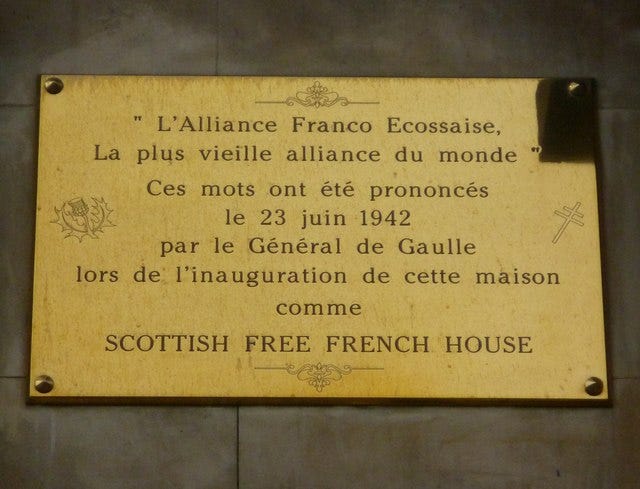
Finally, Charles de Gaulle reminisced in his June 1942 speech delivered in Edinburgh describing the alliance as “the oldest alliance in the world”. With great pride he declared:
“In every combat where for five centuries the destiny of France was at stake, there were always men of Scotland to fight side by side with men of France, and what Frenchmen feel is that no people has ever been more generous than yours with its friendship.”
That’s not even a friendship, that is on some ride or die shit! In 1995 celebrations were held in both countries to celebrate it’s 700th anniversary of the Auld Alliance. Extensive research has been made by British historian Siobhan Talbott and the conclusion was the alliance has never been formally revoked. Even Scottish people were granted French nationality up to 1903. That is a loyal alliance if I ever heard of one.
To commemorate that alliance, what better way is there than with a drink?
The Auld Alliance Cocktail
I know… I’m sorry, I tend to write a massive piece on history before the promised cocktail or meal… I can’t help but get excited about the history of things and share it with you. If you’ve read this far you deserve a drink!
There are countless variations of The Auld Alliance cocktail, some with Scotch and Cognac, some with wine and Scotch, one with Creme de Cassis and Whisky and many more.
Hard to choose one for us here but, two big name whisky brands have their version of The Auld Alliance cocktail. Both brands use the oldest whisky their brand has. The first uses 18 year old Scotch whisky and paired with just a Cognac just as old, syrup, Peychaud’s bitters, Old Fashioned bitters and an orange twist. Sounds lovely!
The second is in my opinion more fitting to the history, and more simple with an 18 year old Single Malt Scotch Whisky and Sauternes, a french sweet wine from the Bordeaux region.
It’s an easy cocktail for 1 serving:
Grab mixing glass full of ice.
Pour in 35ml Single Malt Scotch Whisky and 35ml of Sauternes.
Stir to chill.
Strain into a chilled coupe glass.
Garnish with an orange twist.
Scotch Pie-ly yours,
The Greasy Pen.
Thank you for reading.





